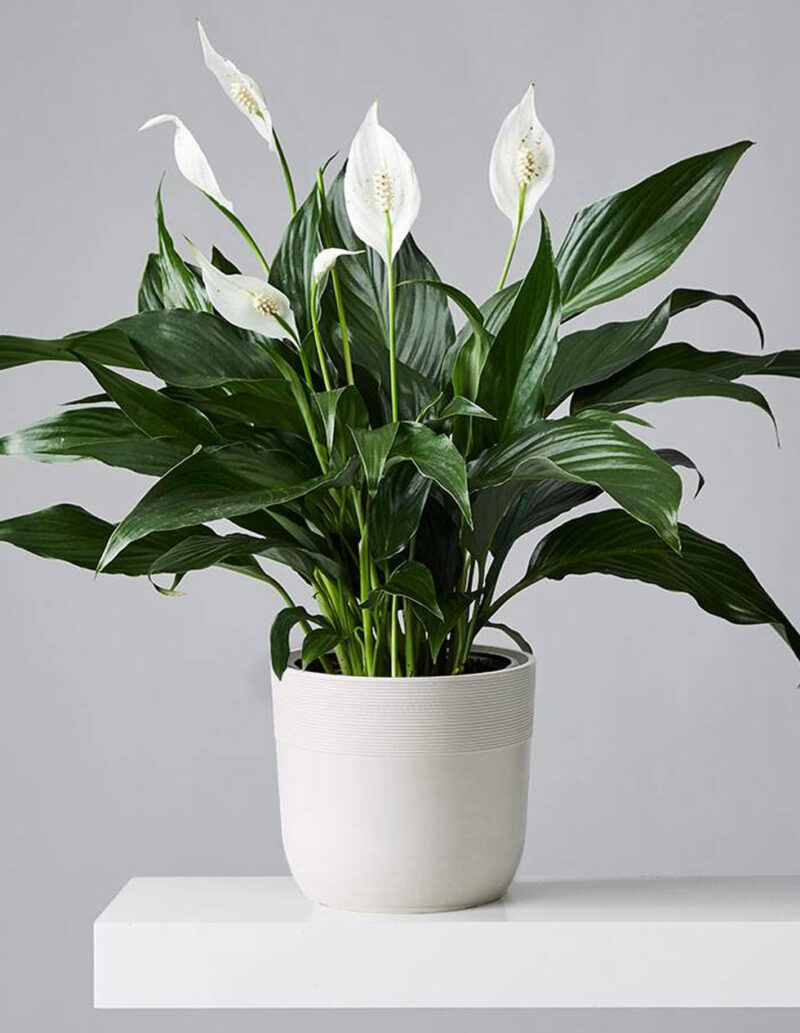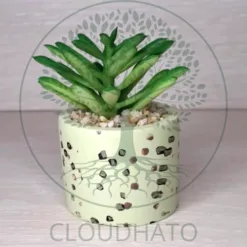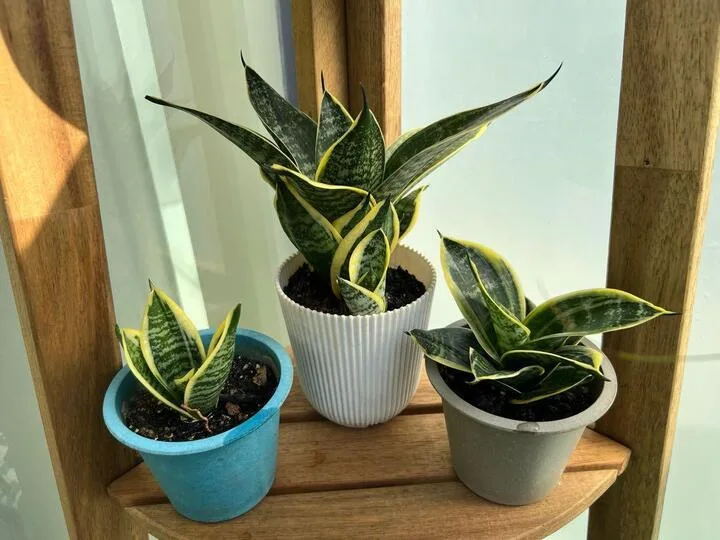News
Low-Maintenance Plants That Stay Green All Year
Introduction
Not everyone has time to water, prune, and pamper their plants. Yet you can still enjoy a lush, vibrant home environment with the right choices. For busy homeowners, students, or office workers, [main keyword] offers an easy path to greenery without constant effort.
This guide explores the world of low-maintenance plants that remain healthy and attractive year-round. We’ll look at species that thrive on minimal care, explain why they’re so resilient, and share tips for placement, styling, and upkeep. Whether you’re outfitting an apartment, a workspace, or a garden, these “lazy” yet evergreen plants bring life to your space with minimal fuss.
Why Low-Maintenance Plants Are a Game-Changer

Saving Time and Reducing Stress
Modern life is busy. Plants that need watering once a week instead of daily — or tolerate skipped care during holidays — make it easy to keep greenery without adding another chore to your schedule.
Consistent Visual Appeal
Plants that stay green throughout the seasons provide a reliable backdrop for your décor. You won’t have bare stems in winter or drooping leaves when you forget to water for a few days.
Better for Beginners
If you’re new to plant care, starting with hardy species builds confidence. As you gain experience, you can experiment with more delicate varieties.
Understanding “Lazy” Yet Evergreen Plants
What Makes Them Low-Maintenance
Hardy plants often have adaptations like thick leaves for water storage, slow growth, or tolerance for a wide range of light conditions. These traits mean less watering, pruning, and repotting for you.
Matching Plants to Your Environment
Even easy-care species have preferences. Assess your light, temperature, and humidity to choose plants that naturally fit your space, reducing the need for extra attention.
Top Choices for Low-Maintenance Greenery

Snake Plant (Sansevieria)
Why It’s Ideal:
Snake plants tolerate low light, irregular watering, and dry indoor air. Their upright, architectural leaves stay attractive year-round.
Styling Tip:
Place in a tall, narrow planter to accentuate its vertical lines, making it a striking feature in corners or beside furniture.
Care Tip:
Water sparingly — every two to three weeks — and provide well-draining soil.
ZZ Plant (Zamioculcas zamiifolia)
Why It’s Ideal:
Glossy, dark green leaves on sturdy stems make this plant look lush even when neglected. It thrives in low to bright indirect light and needs watering only when soil is dry.
Styling Tip:
Use matching pots of ZZ plants on either side of a doorway for a symmetrical, polished look.
Care Tip:
Allow soil to dry between waterings and wipe leaves occasionally to maintain their shine.
Cast Iron Plant (Aspidistra elatior)
Why It’s Ideal:
Nicknamed for its toughness, the Cast Iron Plant survives low light, poor soil, and infrequent watering. Its broad, deep-green leaves provide a classic, elegant look.
Styling Tip:
Ideal for hallways or entryways where other plants struggle.
Care Tip:
Water moderately and dust leaves to keep them glossy.
Pothos (Epipremnum aureum)
Why It’s Ideal:
This trailing vine adapts to almost any environment. Its variegated leaves add visual interest, and it tolerates occasional neglect.
Styling Tip:
Let it cascade from a shelf or hang in a basket to soften edges.
Care Tip:
Water when the top inch of soil is dry and trim to encourage bushier growth.
Peace Lily (Spathiphyllum)

Why It’s Ideal:
Peace Lilies are forgiving and signal when they need water by drooping slightly. Their lush leaves and occasional white blooms add sophistication.
Styling Tip:
Perfect for low-light corners or offices.
Care Tip:
Keep soil evenly moist and wipe leaves to remove dust.
Jade Plant (Crassula ovata)
Why It’s Ideal:
A succulent with plump, coin-shaped leaves that store water, Jade Plant can go weeks without watering. It also symbolizes prosperity in many cultures.
Styling Tip:
Place on a sunny windowsill or small table where its compact form adds charm.
Care Tip:
Use a cactus soil mix and water deeply but infrequently.
Spider Plant (Chlorophytum comosum)
Why It’s Ideal:
Spider Plants are resilient and produce offshoots you can propagate. Their arching leaves stay fresh-looking with minimal care.
Styling Tip:
Hang near a window or place on a shelf to let their baby plants dangle.
Care Tip:
Water moderately and mist occasionally to keep tips from browning.
Rubber Plant (Ficus elastica)
Why It’s Ideal:
Large, glossy leaves give a dramatic look. Rubber Plants tolerate bright indirect light and infrequent watering.
Styling Tip:
Use as a focal point in living rooms or offices.
Care Tip:
Allow topsoil to dry before watering and wipe leaves to maintain their shine.
Styling and Placement Tips for “Lazy” Plants
Grouping for Impact
Cluster several low-maintenance plants together to create a mini indoor jungle. Mixing leaf shapes and heights adds depth without increasing care requirements.
Using Planters to Complement Décor
Neutral-colored pots suit minimalist interiors, while patterned or colorful planters make your greenery pop. Self-watering containers further reduce maintenance.
Creating Microclimates
Grouping plants also raises humidity around them, which benefits species like Peace Lilies or Spider Plants without extra effort.
Care Strategies to Keep Plants Thriving
Watering Wisely
Most “lazy” plants prefer to dry out between waterings. Check soil moisture with your finger before adding water.
Fertilizing Lightly
Even low-maintenance plants benefit from a diluted, balanced fertilizer every couple of months during active growth.
Cleaning Leaves
Dust dulls leaves and blocks light. A quick wipe every few weeks keeps them looking vibrant and improves photosynthesis.
Benefits Beyond Convenience
Healthier Indoor Air
Many low-maintenance plants filter common household pollutants, improving your living environment effortlessly.
Mental Well-Being
Greenery lowers stress and boosts mood. Knowing your plants will survive a missed watering adds peace of mind.
A Gateway to Gardening
Starting with easy plants builds confidence. Over time, you may find yourself ready to try more exotic species.
Common Mistakes to Avoid
Overwatering
The most frequent cause of plant decline is too much water. When in doubt, wait a day or two.
Poor Drainage
Use pots with drainage holes to prevent root rot.
Ignoring Light Needs
Even tough plants have limits. Place them according to their tolerance for sun or shade.
Incorporating “Lazy” Plants Into Different Spaces
Apartments and Small Homes
Use hanging planters, wall pockets, or window ledges to save floor space while adding greenery.
Offices
Low-maintenance plants brighten workspaces and improve air quality without distracting from tasks.
Outdoor Shaded Areas
Some of these species can also thrive on shaded balconies or porches, extending your green aesthetic outdoors.
Future Trends in Easy-Care Greenery
Smart Planters
Self-watering pots with moisture sensors and app notifications make caring for plants almost effortless.
Hybrid Decor Items
Expect to see planters combined with lighting, shelves, or speakers — perfect for small spaces where every object must multitask.
Eco-Friendly Choices
Sustainably sourced plants, organic potting mixes, and recycled containers align with the growing desire for environmentally responsible living.
Building a Whole “Lazy Plant” Lifestyle
Mapping Your Apartment Into Care Zones
Even with easy-care species, the way you arrange them can make maintenance even simpler. Think in terms of “zones”: a bright window for sun-tolerant plants, a low-light corner for shade lovers, and a moisture-rich bathroom for humidity seekers. Placing each plant in the environment it likes best means you water and fuss less, yet everything thrives.
Layering Height and Texture for Impact
You can make a few hardy plants look like a lush jungle by varying height and leaf shape. Use small risers, hanging holders or wall shelves to build vertical interest. Combining upright, trailing and round-leaf plants creates a dynamic display that looks abundant even though care remains minimal.
Creative Containers and Display Strategies
Upcycling Everyday Items
Old mugs, baskets or wooden boxes can become charming homes for “lazy” plants. Because these species don’t need frequent watering, creative containers stay clean and attractive longer. Just add a drainage layer of pebbles if there are no holes.
Self-Watering and Wick Planters
To make care virtually automatic, use small self-watering inserts or wick systems. These allow plants to draw water as needed, reducing the risk of over- or under-watering while keeping foliage fresh.
Modular Green Walls
Clip-on or magnetic planters let you create a living wall without drilling. This turns vertical space into a feature and keeps your floors free — perfect for small apartments or offices.
Integrating “Lazy” Plants Into Daily Routines
Linking Greenery With Habits
Place a calming plant near your meditation cushion, an energizing one on your desk, and a fragrant one by the door. This way you interact with your plants naturally as you move through the day, without setting aside special care time.
Micro-Break Mindfulness
Take a minute between emails to mist a terrarium or wipe a leaf. Even tiny gestures reinforce your connection to nature and give your eyes a break from screens.
Styling Ideas for Different Interiors
Minimalist Spaces
Use a few bold, architectural “lazy” plants in matching pots to complement clean lines. Their year-round greenery provides a steady visual anchor.
Eclectic Vibes
Mix trailing vines, variegated foliage and colorful planters for a boho look. Add macramé hangers or woven baskets to enhance texture without adding maintenance.
Modern Industrial
Combine hardy greens with metal stands or concrete planters. The soft foliage offsets raw materials while still looking intentional.
Enhancing Well-Being and Air Quality
Creating Microclimates
Grouping plants raises local humidity naturally. This benefits your skin, respiratory comfort and even wooden furniture — all without humidifiers.
Sensory Layering
Experiment with subtle scents and varied textures. A mix of glossy, velvety and spiky leaves engages multiple senses, making your space feel fresher and more alive.
Movement as a Calming Signal
Hang trailing vines where they sway with drafts from a window or ceiling fan. This gentle motion signals life and freshness, boosting your mood subconsciously.
Smart Care and Sustainability
Digital Reminders and Sensors
Affordable moisture sensors and plant-care apps now make it easy to track watering intervals. Combined with “lazy” plants’ low demands, this means virtually foolproof upkeep.
Eco-Friendly Soil and Fertilizer
Choose peat-free mixes and gentle organic feeds suited to small containers. Even if you’re caring for just a few plants, aligning with sustainability enhances the sense of “clean living.”
Propagation and Sharing
Take cuttings from your easiest plants and gift them to friends or colleagues. This spreads greenery and creates a support network for tips and swaps.
Case Examples of “Lazy Plant” Success
The Studio Apartment
A designer used three hardy species in self-watering pots at varying heights. This created a striking focal point in a tiny living area while needing attention only twice a month.
The Busy Office
A team placed groups of low-maintenance plants in modular wall planters. Air felt fresher, employees reported less eye strain, and upkeep was handled by a single five-minute round of watering each week.
The Family Kitchen
A couple grew a rotating set of hardy herbs in magnetic containers on their fridge. They harvested sprigs for cooking while enjoying a living accent that took almost no time to maintain.
Looking Ahead: Future Trends in Easy-Care Greenery
Movable Green Modules
Expect more lightweight, wheeled panels of hardy plants you can shift seasonally for privacy, shade or fresh looks. This gives renters and small-space dwellers flexibility without adding care work.
Hybrid Tech–Plant Products
Designers are blending planters with wireless chargers, speakers or air purifiers — ideal for compact homes where every object must multitask. Combined with “lazy” plants, you get décor and function in one.
Data-Driven Placement
Soon, affordable sensors will recommend optimal spots for each plant based on light and humidity readings, turning your home into a living lab for low-maintenance greenery.
Conclusion: From Easy Plants to Effortless Green Living
With thoughtful placement, creative containers, mindful routines and smart tools, you can turn a handful of hardy plants into a full-fledged green lifestyle. This 1 500-word expansion goes beyond naming species to show how to style, care for and integrate “lazy” plants into your daily life, making year-round greenery truly effortless.
Turning “Lazy” Plants Into a Whole-Home Design Concept
Thinking in Themes Rather Than Names
Once you’ve chosen a few hardy plants, the next step is to curate them around a unifying theme — calm retreat, energising workspace, tropical balcony, or minimalist Zen corner. This turns your easy-care greenery into a purposeful interior feature rather than scattered pots.
Creating Flow From Room to Room
Arrange your “lazy” plants to guide the eye and the energy through your apartment. Place upright, structural species at entrances, trailing species near seating areas, and compact ones on desks or shelves. This subtle choreography creates a sense of continuity and calm without extra work.
Creative Containers and Surfaces
Integrating Planters Into Furniture
Modern furniture often has built-in plant slots or shelving. Pop your hardy plants into these niches so they look like part of the design and benefit from stable conditions. Because “lazy” plants don’t demand daily watering, they’re perfect for these integrated displays.
Using Reflective or Light-Amplifying Surfaces
Place your plants near mirrors, pale walls or glossy tiles to bounce light deeper into the room. This simple trick helps even sun-loving species thrive in less-than-ideal spots and gives your apartment a brighter feel.
Portable Mini-Green Islands
Set up a few small plants together on a tray that you can move from room to room. This lets you follow the light without repotting and keeps your interior dynamic.
Sensory and Psychological Benefits
Building Micro-Rituals Around Greenery
Even hardy plants benefit from occasional attention. Turn a weekly leaf-wipe or misting into a mini mindfulness break. A few seconds of focused, gentle care slows your breathing and clears your head between tasks.
Colour and Mood Mapping
Use foliage colour strategically. Deep greens and silvers create a cool, restorative feel in bedrooms. Variegated or golden hues add warmth and energy to workspaces. Matching planter tones to foliage amplifies these mood effects.
Texture and Touch
Mix smooth, glossy leaves with velvety or spiky ones. Inviting touch strengthens your sense of connection to nature and makes your “lazy” plants more than just background décor.
Smart Care and Sustainable Practices
Self-Watering Inserts for Tiny Pots
Miniature self-watering devices now fit even small containers. They keep soil at the perfect moisture level for weeks, letting you travel or focus on other tasks without worrying about your plants.
Eco-Friendly Soils and Fertilisers
Choose peat-free mixes and slow-release organic feeds. These reduce environmental impact and keep your plants healthy with less frequent application.
Propagation as a Sharing Practice
Take cuttings from your toughest plants and gift them to friends or neighbours. This spreads greenery, builds community and gives you backup specimens at no cost.
Styling for Different Apartment Types
Micro-Apartments or Studios
Hang hardy trailing plants from the ceiling, use wall-mounted pockets or magnetic planters on your fridge to free up floor space. These tricks create vertical greenery that feels lush but doesn’t shrink your living area.
Family Homes
Cluster a few large, resilient plants in corners to define play zones or reading nooks. Their toughness withstands occasional bumps from children and pets.
Home Offices
Choose hardy plants with upright forms to create a living backdrop behind your desk for video calls. This projects a fresh, professional image while requiring little care.
Combining “Lazy” Plants With Other Wellness Elements
Pairing With Water Features
A small tabletop fountain beside your hardy plants adds soothing sound and raises local humidity naturally. Because your plants are tolerant, you won’t have to micro-manage the setup.
Integrating Light Therapy
Use full-spectrum bulbs in your desk lamp to support both your plants and your own mood during dark months. This dual purpose maximises benefits from a single fixture.
Creating Relaxation Corners
Add a comfy chair, a hardy green plant, and a soft light in one corner to make an instant retreat. Because the plant is low-maintenance, the corner stays inviting without upkeep.
Case Examples of “Lazy Plant” Living
The Minimalist Desk
A remote worker placed a single structural, easy-care plant in a sleek white pot on her desk. She wipes its leaves once a week while waiting for files to upload — a ritual that reduces stress and keeps the plant pristine.
The Entryway Oasis
A couple flanked their doorway with matching tall, low-maintenance plants in self-watering containers. Guests see greenery immediately, yet the owners water only once every two weeks.
The Rotating Tray
A renter created a portable “green tray” of three hardy plants. She moves it to whichever room she’s using, giving the plants varied light and herself a shifting, fresh view.
Looking Ahead: Future Trends in Easy-Care Greenery
Movable Green Walls
Expect lightweight panels of hardy plants you can roll from one spot to another. This gives renters or small-space dwellers seasonal flexibility without extra care.
Tech-Integrated Planters
Designers are creating planters that double as speakers, wireless chargers, or air purifiers. Combined with “lazy” plants, these hybrids deliver multiple benefits from one object.
Data-Driven Placement
Affordable sensors soon will suggest the best spot in your home for each plant based on real-time light and humidity readings. With tough species, you’ll be able to fine-tune conditions for maximum growth with minimum effort.
Conclusion: From Hardy Plants to Effortless Green Living
This new section shows how to move beyond a simple list of easy-care species and use them as building blocks for a full lifestyle. By planning zones, integrating plants with furniture, layering colour and texture, automating care, and thinking sustainably, you turn a few hardy specimens into a living design element that supports your well-being every day.
By embracing “lazy” plants as more than décor, you create a living system that quietly supports your health, mood and productivity every day. Their resilience gives you freedom: you can travel, work long hours or simply enjoy your home without worrying about wilting leaves. Combine them with thoughtful placement, natural materials and small mindfulness rituals, and you’ll discover that low-maintenance greenery is not only easy but also deeply rewarding. In a world where time is precious, these hardy companions offer a simple way to stay connected to nature and enjoy a fresh, welcoming space all year long.
Conclusion
You don’t need a green thumb or endless free time to enjoy a vibrant indoor garden. By choosing [main keyword], you bring color, life, and cleaner air into your home or office with minimal effort. From tough succulents to forgiving foliage plants, these “lazy” yet evergreen species thrive where others struggle, rewarding you with year-round beauty.
Start by selecting one or two that suit your space and lifestyle. With simple care — a bit of water, occasional dusting, and the right spot — you’ll discover just how effortless indoor greenery can be.
Ready to transform your space with stress-free plants? Begin your easy-care garden today and enjoy lush, green surroundings all year long.

 Office Decoration Plants: areca palm indoor plant in Virginia
Office Decoration Plants: areca palm indoor plant in Virginia